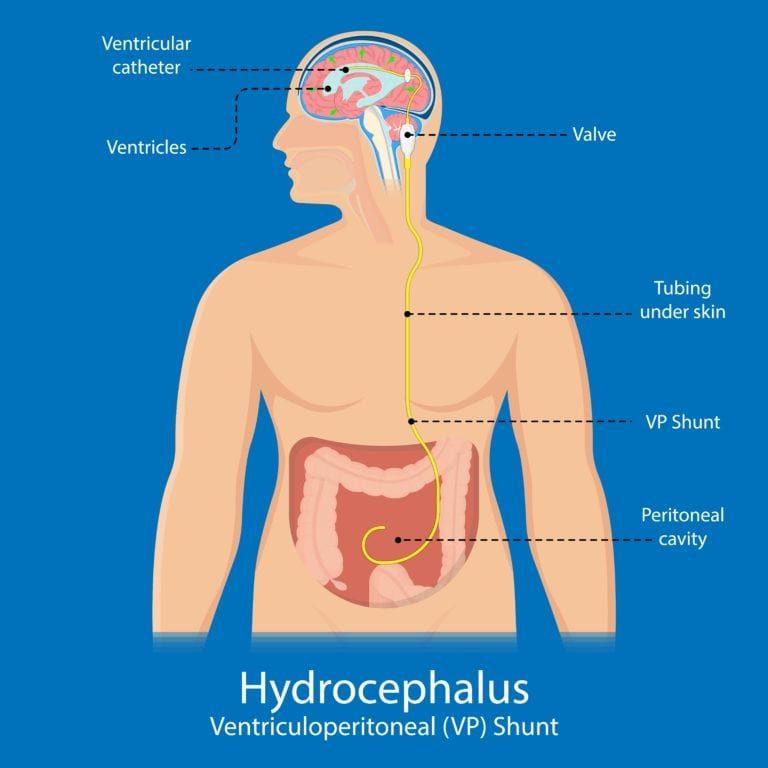How Does a VP (Ventriculoperitoneal) Shunt Work

Hydrocephalus, a condition where a build up of fluid occurs in the brain resulting in potentially dangerous pressure, is often treated by the implanting of a special shunt design to relieve that pressure. This shunt is known as a ventriculoperitoneal shunt, and is typically put in while the patient is under general anesthetic. Once implanted the shunt will help the patient regulate a proper amount of pressure in their head by diverting the fluid out of the brain and into a drainage site located somewhere else in the body.
What Is A Ventriculoperitoneal Shunt?
This special shunt is comprised of two catheters to remove the fluid from the brain. A catheter is a tube that can be used to move liquid. One of these tubes is known as the inflow catheter, and is implanted by the doctor using a small hole they make in the skull. The inflow catheter directs the fluid out of the brain and into the outflow catheter which takes it to the drain point. Also connected to the shunt is a pump that helps control the shunt so it only allows drainage when it’s appropriate. In addition to this basic design, there are two forms of shunt.
- Progammable – These shunts has a valve that is external and can be adjusted to suit the needs of the patients condition.
- Unprogrammable – This type of shunt is programmed to release fluid when the pressure reaches a certain point. The valve in this case is internal and is not adjustable following it being inserted.
What Is It Used For?
These shunts are used to help treat as condition known as hydrocephalus, commonly referred to as ‘water on the brain’. This water is actually cerebrospinal fluid (CSF) and is essential to the healthy function of your brain, but when too much of this fluid builds up without draining it can become dangerous. The CSF moves throughout the ventricles of the brain delivering nutrients and clearing away waste to help keep the brain safe and healthy.
What Are The Symptoms of Hydrocephalus?
In hydrocephalus the brain doesn’t properly drain off the CSF, and other conditions may exist as well. Untreated hydrocephalus is dangerous and can result in death or brain damage if left untreated. Those with hydrocephalus may have:
- CSF is blocked from proper drainage due to an obstruction
- The body is producing too much CSF
- The body isn’t properly absorbing CSF properly
The conditions that can cause hydrocephalus include:
- It can be inherited from your parents.
- Injuries to the head
- Brain tumors
- Stroke
- Infections with the brain
Potential symptoms can include:
- Problems remembering things clearly
- seizures
- headaches
- irritability
- vision problems
- trouble thinking
- loss of control of the bowel or bladder
If you want to know more information about hydrocephalus then you should speak to a specialist. Dr. Diana Wilson has been working with the community in Dallas TX at Neurosurgeon and Spine Fort Worth to provide good information about conditions like hydrocephalus.

